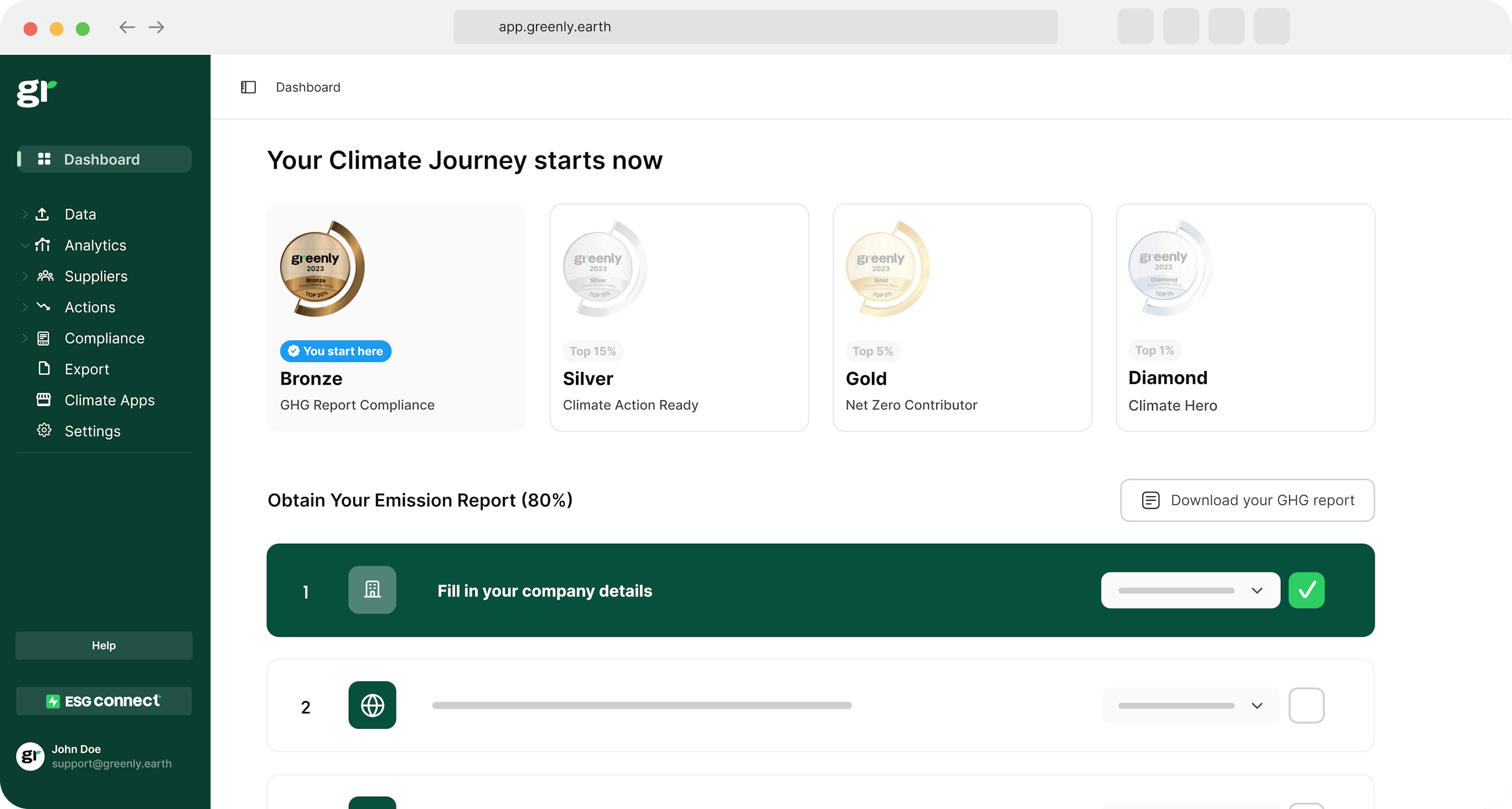
What are the 3 Pillars of Corporate Sustainability?
In this article, we'll explore what the 3 pillars of corporate responsibility are, why they're important, and how businesses can turn them into practical action.
ESG / CSR
Industries



In today’s push for more sustainable products, earning the trust and approval of investors, customers, and stakeholders is becoming increasingly challenging. Demonstrating the environmental impact of your product is now essential - but how can your company effectively communicate this?
This is where an Environmental Product Declaration (EPD) proves invaluable. An EPD provides transparent, standardised data about a product’s environmental footprint, enabling companies to showcase their commitment to sustainability and meet growing regulatory demands.
👉 In this article, we'll explore what an Environmental Product Declaration is, why it matters, and how your company can create one to align with sustainability goals and stakeholder expectations.

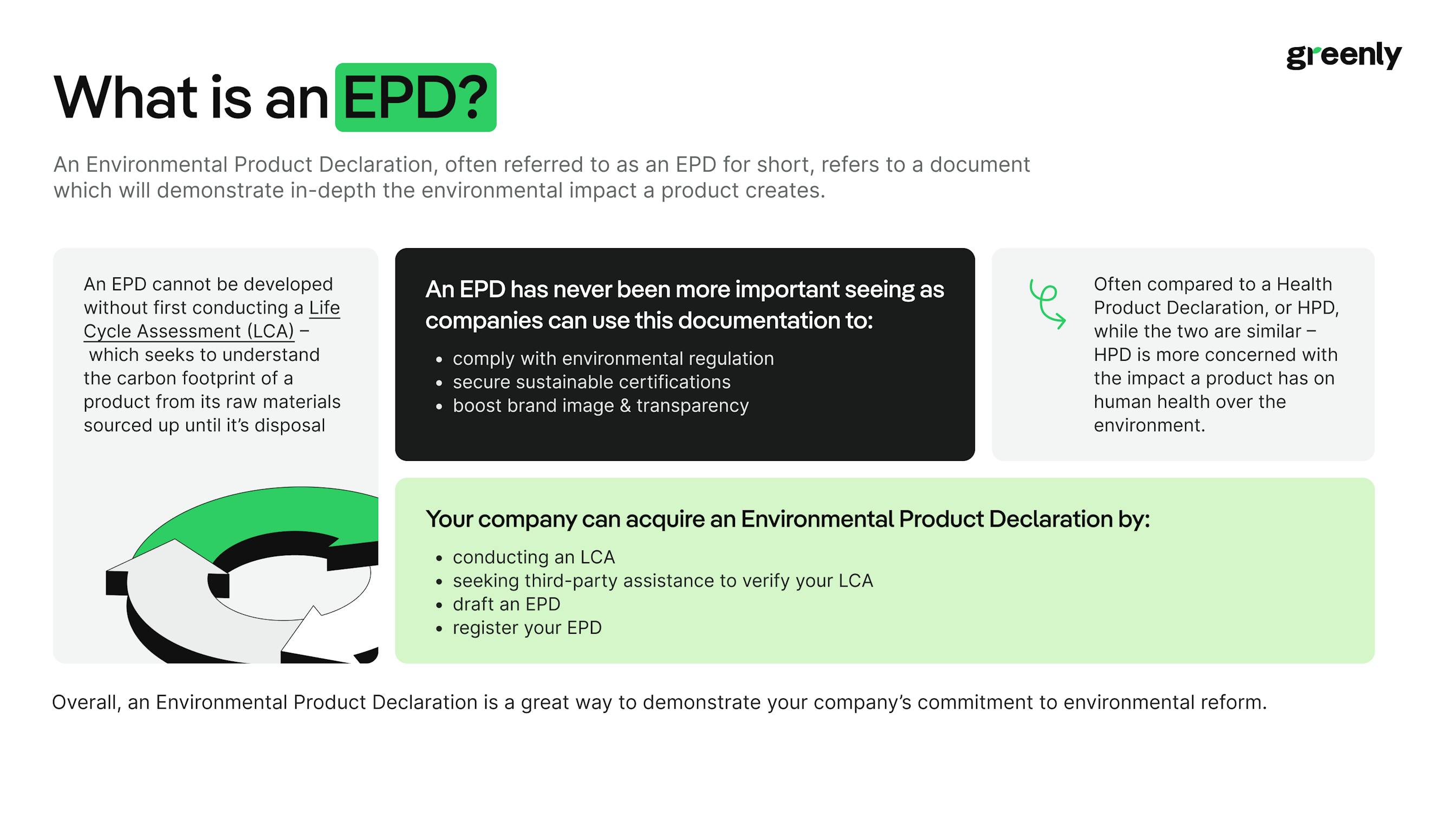

An Environmental Product Declaration (EPD) is a standardised document that provides a detailed analysis of a product's environmental impact throughout its entire life cycle. From sourcing raw materials to disposal at the end of its use, an EPD quantifies a product’s environmental footprint in a clear and transparent manner.
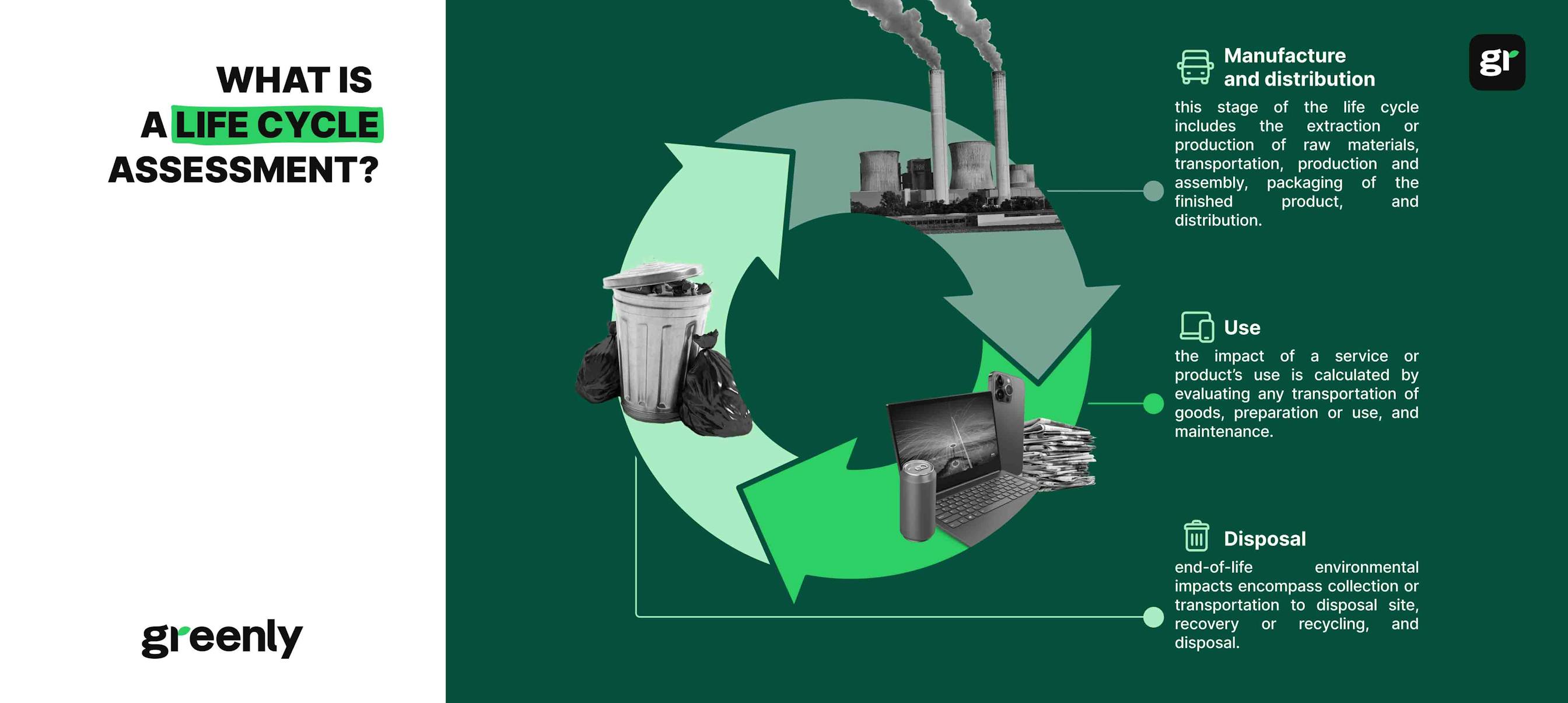

👉 Who Benefits from EPDs?
EPDs are especially relevant for:
An Environmental Product Declaration typically covers key aspects of a product’s environmental performance, such as:
💡 In addition to these elements, EPDs often highlight opportunities for reducing a product's environmental impact. For example, they may provide recommendations for users, such as recycling options or maintenance practices that could lower the product's overall carbon footprint.
Environmental Product Declarations (EPDs) emerged in the 1990s to address the growing demand for transparent and standardised information regarding the environmental impacts of products throughout their life cycles. This initiative aimed to provide consumers, businesses, and regulators with credible data to facilitate informed decision-making and promote sustainability.
Key Milestones in EPD Development:
Environmental declarations are categorised into three types, each serving distinct purposes:
Environmental Product Declarations (EPDs) must adhere to established frameworks and standards to ensure consistency, credibility, and comparability across industries and regions. Two significant frameworks that complement global standards like ISO 14025 are EN 15804 (European standard) and TRACI 2.1 (US framework). These frameworks define how the environmental impacts of products are assessed and reported.
What is EN 15804?
EN 15804 is a European standard that defines the core rules for creating EPDs specific to construction products and services. The ECO Platform plays a critical role in aligning EN 15804-compliant EPDs across Europe, ensuring mutual recognition and streamlined application for construction projects.
💡 Example Application:
A company producing concrete slabs in Europe must use EN 15804 to develop an EPD that complies with EU regulations and is recognised across member states.
What is TRACI 2.1?
Developed by the U.S. Environmental Protection Agency (EPA), TRACI 2.1 (Tool for the Reduction and Assessment of Chemical and Other Environmental Impacts) is a framework for assessing environmental impacts in the United States. It is often used as a basis for LCAs and EPDs in North America.
💡 Example Application:
A flooring manufacturer in the U.S. uses TRACI 2.1 to calculate the environmental impacts of their product’s life cycle, ensuring compliance with regional standards and green building programs.
👉 Both EN 15804 and TRACI 2.1 complement ISO 14025 by providing regional and sector-specific guidelines for EPD development.
Unlike Type I and II labels and claims, Environmental Product Declarations (EPDs), must be verified and accredited by recognised systems or EPD program operators to ensure credibility and compliance with international standards. Simpler forms of environmental declarations, such as Type II claims, may be self-declared but still require accuracy and verifiability.
Verified EPD: Key Accreditation Bodies:
How EPD Accreditation Works:
The EPD verification process typically involves the following steps:
Why Accreditation Matters:
Accreditation ensures that EPDs are credible, standardised, and globally recognised. This is critical for:
👉 By adhering to accredited systems, EPDs maintain their integrity and serve as reliable tools for environmental transparency.

Environmental Product Declarations (EPDs) provide a standardised way to measure and communicate a product’s environmental impact across various stages of its life cycle. EPDs typically include a range of impact indicators, which quantify different environmental effects. These indicators help stakeholders understand the full extent of a product’s sustainability profile.
| Impact Indicator | Description | Example Application |
|---|---|---|
| Global Warming Potential (GWP) | Measures the product’s contribution to climate change by quantifying greenhouse gas (GHG) emissions. | E.g., Calculating the CO₂e emissions generated during the production of steel for construction. |
| Ozone Depletion Potential (ODP) | Assesses the impact of the product on the depletion of the ozone layer. | E.g., Evaluating the effects of chemical emissions in refrigerants used in cooling systems. |
| Acidification Potential (AP) | Quantifies the contribution to acid rain, which can harm ecosystems and buildings. | E.g., Measuring SO₂ emissions from manufacturing processes. |
| Eutrophication Potential (EP) | Measures the product’s impact on water bodies through nutrient pollution, leading to algae growth. | E.g., Assessing nitrogen runoff from agricultural production. |
| Photochemical Ozone Creation Potential (POCP) | Evaluates the product’s role in forming ground-level ozone, which contributes to smog. | E.g., Tracking volatile organic compound (VOC) emissions from paints and coatings. |
| Abiotic Resource Depletion (fossil fuels) | Examines the depletion of non-renewable energy resources such as oil, gas, and coal. | E.g., Calculating the fossil fuel energy required to produce plastic packaging. |
| Water Use | Measures the freshwater consumption associated with the product’s life cycle. | E.g., Estimating the water required during the production of textiles. |
| Land Use | Assesses the land area impacted by the product, including deforestation or habitat disruption. | E.g., Evaluating land-use changes for agriculture or resource extraction. |
| Human Health Impacts | Evaluates risks posed to human health from pollutants or hazardous materials. | E.g., Measuring particulate matter emissions affecting air quality near production facilities. |
| Waste Generation | Quantifies the amount of waste produced at different stages of the product life cycle. | E.g., Calculating construction waste generated from building materials. |
An Environmental Product Declaration (EPD) is a powerful tool that helps companies navigate the growing demand for sustainable practices. By providing standardised and transparent data on a product’s environmental impact, an EPD can bestow the following advantages:
| Benefit | Description |
|---|---|
| Greater Sustainability and Reduced Environmental Impact | EPDs encourage companies to make further sustainability improvements by providing a detailed overview of a product’s impact on the planet. This motivates businesses to set new goals for reducing emissions and waste, ultimately improving their environmental footprint. |
| Improved Transparency and Trust | Transparency is at the core of sustainability. EPDs help companies build stronger, more trusting relationships with stakeholders by demonstrating their commitment to environmental reform. This openness also attracts new customers and investors who value sustainability. |
| Efficient Sustainable Supply Chain Management | By analyzing data in an EPD, companies can collaborate more effectively with suppliers to reduce emissions across the supply chain. This not only improves product life cycles but also fosters innovation in developing more sustainable products. |
| Enhanced Decision-Making | EPDs provide businesses with insights that guide smarter decisions, such as optimizing energy consumption, reducing water usage, or choosing more sustainable materials. This knowledge helps companies align their operations with long-term sustainability goals. |
| Innovative Marketing and Branding Opportunities | EPDs allow companies to promote their products with credible sustainability claims, reducing the risk of greenwashing accusations. This opens new avenues for partnerships, marketing campaigns, and branding strategies that highlight their commitment to the environment. |
| Legal Compliance and Risk Mitigation | While EPDs are not mandatory globally, they serve as valuable supporting documentation for regulatory compliance. In regions with stringent environmental disclosure laws, EPDs can help companies avoid legal fines and demonstrate adherence to regulations. |
👉 By adopting an EPD, companies can enhance their brand image, improve supply chain management, and align their operations with sustainability goals, ultimately boosting business efficiency and performance.
While Environmental Product Declarations (EPDs) are not universally required by law, certain regions and countries are increasingly integrating EPDs into regulatory frameworks. These efforts reflect a growing recognition of EPDs as essential tools for sustainability, transparency, and compliance with environmental goals.
Environmental Product Declarations (EPDs) are increasingly integrated into sustainability regulations and frameworks across the UK, the US, and the EU. While not universally mandatory, their adoption is driven by specific regional requirements, voluntary green certifications, and global sustainability goals.
EPDs in the UK
In the UK, EPDs are primarily used in the construction industry and are supported by green building certifications like BREEAM (Building Research Establishment Environmental Assessment Method).
💡 Example:
HS2, the UK’s high-speed rail project, incorporates EPDs into its procurement processes to minimise the environmental impact of construction materials.

EPDs in the US
In the United States, EPDs are gaining traction as tools to meet state and federal sustainability requirements, particularly in construction.
💡 Example:
The Empire State Building retrofit project used EPDs to select materials that aligned with LEED certification criteria, reducing embodied carbon while maintaining structural integrity.

EPDs in the EU
The European Union is a global leader in integrating EPDs into its regulatory framework, driven by its ambitious European Green Deal and focus on circular economy principles.
💡 Example:
Major EU infrastructure projects, such as the Grand Paris Express, use EPDs to ensure compliance with sustainability goals and reduce carbon emissions in construction.
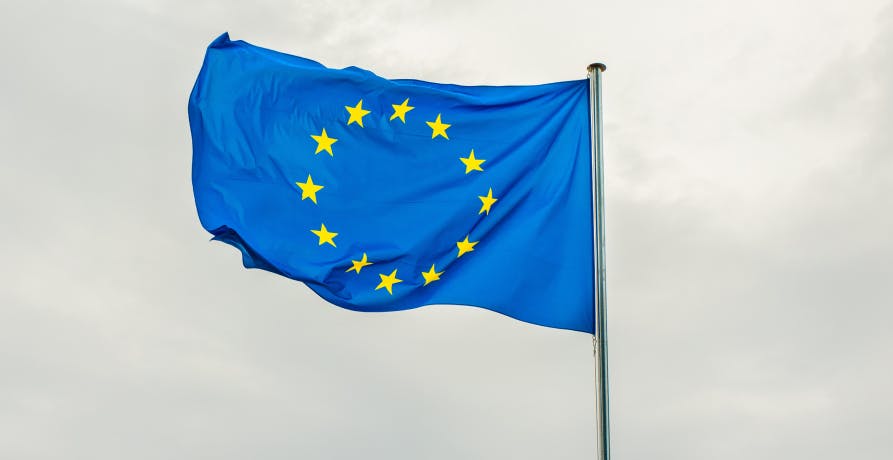
EPDs are playing an increasingly critical role in driving sustainability across industries and regions. They are being actively used in various programs and regulations to foster transparency and environmental responsibility.
Examples of EPD Applications:
💡 Key Insight: These examples underscore the growing influence of EPDs in advancing sustainability goals. Companies that proactively adopt EPDs are not only aligning with regulatory requirements but are also positioning themselves as leaders in transparent and responsible business practices.

Environmental Product Declarations (EPDs) have broad applications across various industries, helping companies assess and disclose the environmental impacts of their products. Below are examples of how different sectors leverage EPDs to drive sustainability, enhance transparency, and meet regulatory requirements:
| Industry | Role of EPDs | Example | Key Impact |
|---|---|---|---|
| Construction | EPDs enable architects, builders, and developers to select materials with minimized environmental impact. They facilitate compliance with certifications like LEED and BREEAM. | Pyroguard: Issued a verified EPD for its fire-resistant glass product range, showcasing sustainability commitment and building trust. | Ensure regulatory compliance and improve reputation as leaders in sustainable building. |
| Manufacturing | Provide clear and credible data about the environmental performance of products, meeting consumer demand for transparency and stricter regulatory standards. | ABB: Uses EPDs to disclose the environmental footprint of its products, aligning with global environmental policies. | Enhance sustainability credentials, build stakeholder trust, and gain competitive advantage in regulated markets. |
| Consumer Goods | Offer detailed insights into product impacts, from packaging to energy use, meeting expectations of environmentally conscious consumers. | IKEA: Integrates EPDs into product assessments to ensure sustainability and support its goal of achieving climate-positive operations. | Enhance brand loyalty by demonstrating sustainability commitment and aligning with market and regulatory trends. |
| Electronics | Assess energy consumption, resource use, and end-of-life impacts of devices like smartphones and laptops to meet eco-label standards and optimize designs. | Samsung: Uses EPDs to evaluate the carbon footprint of devices, improve energy efficiency, and attract eco-conscious customers. | Drive innovation toward sustainable products and boost market appeal. |
| Automotive | Evaluate the environmental impact of materials and components to meet emissions standards and improve vehicle life cycle performance. | Volvo Cars: Incorporates EPDs to assess raw materials and production processes as part of its strategy to achieve a carbon-neutral supply chain. | Support emissions compliance, transparency in reporting, and advancements in sustainable mobility. |
Environmental Product Declarations (EPDs) are driving sustainability initiatives across various industries. Below are two compelling examples highlighting their role in reducing emissions and improving transparency.
Finland: Pioneering EPDs in Construction
In Finland, EPDs are not strictly mandatory, but they are strongly encouraged as part of the country’s sustainability goals and alignment with the European Union’s Construction Products Regulation (CPR). Under the CPR, construction materials used in the EU market must meet rigorous environmental standards, and EPDs are often required to demonstrate compliance.
One example of EPD application in Finland involves the evaluation of bitumen waterproofing membranes, commonly used in roofing shingles. Initially, the Global Warming Potential (GWP) of the material was estimated at 0.4 kg CO₂e/kg. However, by applying a more refined methodology through EPD data, the GWP was recalculated to 0.48 kg CO₂e/kg, providing a more accurate environmental assessment. This seemingly small difference adds up to a significant figure when you consider the scale of the construction sector.
💡 Takeaway: By using EPDs, Finland not only improved the precision of its environmental impact data but also enabled the selection of alternative materials with lower GWP. This proactive approach ensures compliance with EU standards and supports Finland’s broader efforts to minimise emissions in the construction sector.
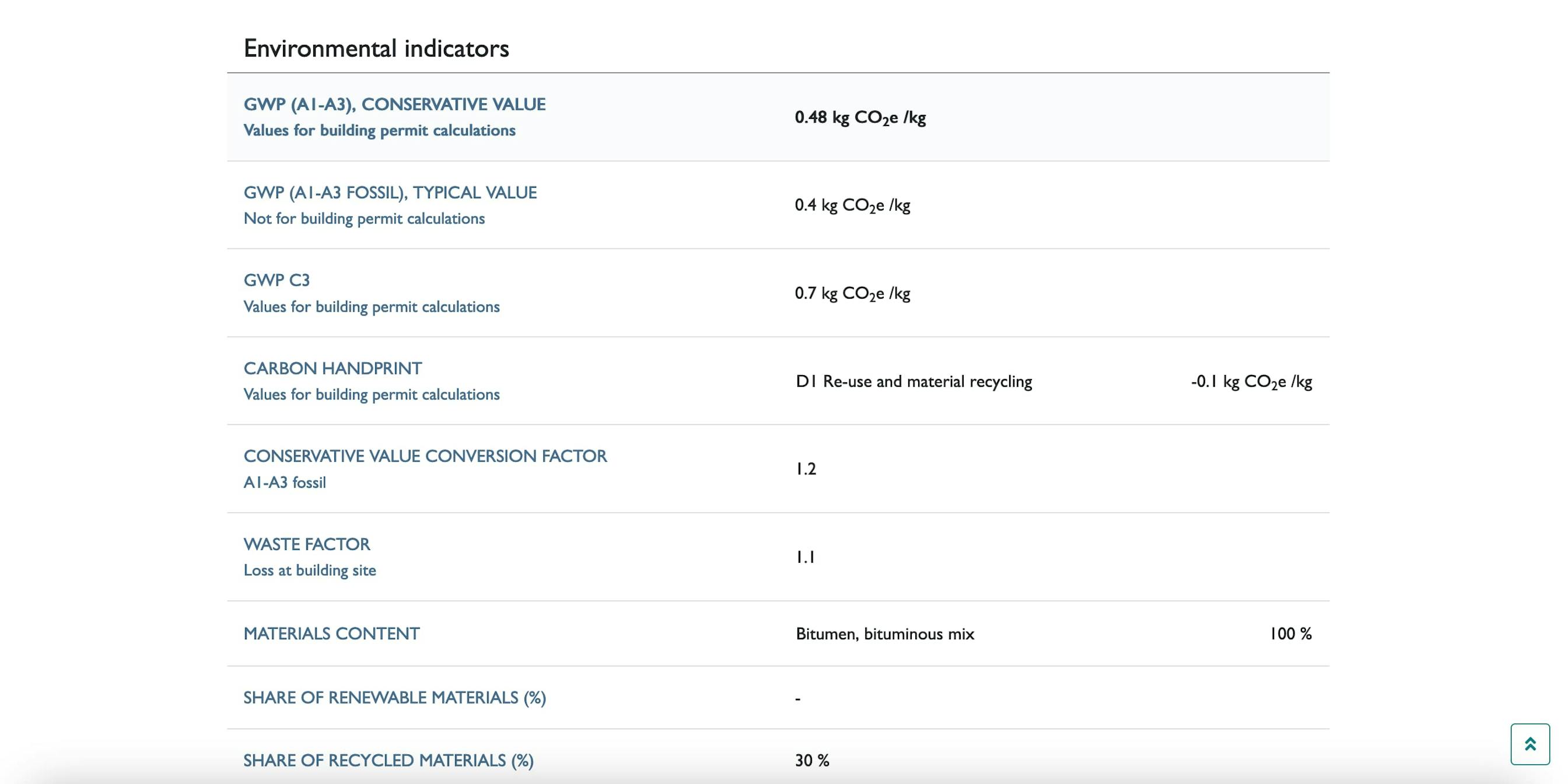
Kingspan Group: Advancing Sustainability through EPDs
Kingspan Group, a leader in high-performance insulation and building envelope solutions, exemplifies the strategic use of Environmental Product Declarations (EPDs) to drive sustainability and transparency.
Kingspan has integrated EPDs into its product strategy to assess and communicate the environmental impacts of its offerings. This approach aligns with the company's broader sustainability initiatives, including its Planet Passionate program, which aims to align with net-zero carbon manufacturing goals.
By conducting comprehensive Life Cycle Assessments (LCAs), Kingspan develops EPDs that provide detailed insights into the environmental performance of its products. This transparency enables the company to:
Kingspan's dedication to sustainability has earned it a place on CDP’s prestigious ‘A-list’ for climate change. The company has also achieved a 26% reduction in absolute Scope 1 and 2 emissions since 2020, underscoring the effectiveness of its environmental strategies.
💡Takeaway: Kingspan's proactive adoption of EPDs demonstrates how companies can leverage environmental transparency to drive innovation, comply with evolving regulations, and strengthen their market position in the sustainability-focused construction industry.
Environmental Product Declarations (EPDs) are vital tools for demonstrating transparency and commitment to sustainability. If your company is considering obtaining an EPD, here’s a practical guide that walks you through the process:
1. Understand the Purpose of an EPD
Before diving into the technical steps, it’s essential to grasp why an EPD matters:
💡 Key Tip: Identify the specific goals you want to achieve with an EPD - whether it’s compliance, stakeholder trust, or competitive advantage.
2. Assemble Your Team and Resources
Creating an EPD isn’t a one-person job. Build a team with the right expertise and resources:
💡 Consider This: Companies already working with carbon management platforms such as Greenly may find it easier to integrate the necessary data for an EPD.
3. Map Your Product’s Life Cycle
The foundation of an EPD is a Life Cycle Assessment (LCA). A key step in conducting an LCA is determining the system boundaries. These boundaries establish which stages of the product life cycle - such as raw material extraction, manufacturing, distribution, usage, and disposal - will be included in the analysis. Clear boundaries are essential for creating a meaningful and comparable EPD.
💡 Actionable Insight: Create a visual map of your product’s life cycle to identify hotspots where data collection is critical.
4. Collect and Validate Data
Accurate data is the backbone of your EPD. Focus on:
💡 Pro Tip: Use standard formats to ensure your data aligns with ISO requirements, such as ISO 14025 and ISO 15804.
5. Develop Your EPD
Once your data is validated, it’s time to create the EPD:
💡 Checklist: Ensure your EPD includes all necessary components:
6. Register and Share Your EPD
Once verified, register your EPD with a recognized program operator like the International EPD System or a regional equivalent. Make it accessible to stakeholders by:
💡 Maximise Impact: Use your EPD as a marketing and communication tool to showcase your commitment to sustainability.
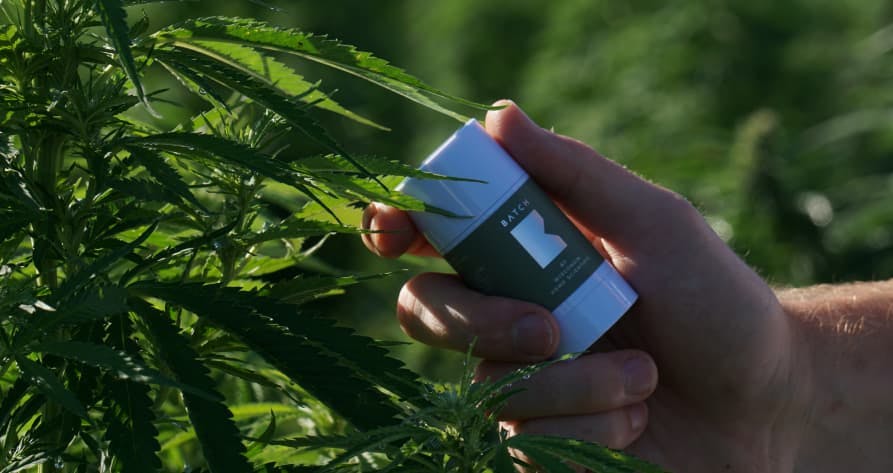
Even with the best intentions, companies can encounter obstacles while obtaining an Environmental Product Declaration (EPD). Below is a table outlining the most common challenges and actionable solutions to address them.
| Challenge | Description | Solutions |
|---|---|---|
| Data Complexity | Gathering comprehensive and accurate life cycle data across multiple stages (e.g., raw materials, production, end-of-life) can be overwhelming, especially for complex products. |
- Start with smaller or pilot projects to focus on manageable data collection. - Use specialised LCA software to centralise and simplify data management. - Collaborate with suppliers to standardise data-sharing processes. |
| High Costs | Developing an EPD requires significant financial investment, including conducting an LCA, hiring consultants, and paying for third-party verification. |
- Leverage industry associations or collaborative partnerships to share costs. - Apply for government grants or sustainability-focused funding programmes. - Focus initial efforts on high-impact products to maximise ROI. |
| Regulatory Uncertainty | Evolving regulations in different regions make it challenging to ensure compliance with varying standards and requirements. |
- Stay informed about updates to key regulations (e.g., EU CPR, ISO standards). - Work with EPD programme operators who understand global requirements. - Build flexibility into processes to adapt to future changes. |
| Resource Limitations | Smaller companies may lack the internal expertise, tools, or bandwidth to complete the EPD process efficiently. |
- Outsource to specialised consultants or third-party verifiers. - Use publicly available PCR templates and guidance from EPD operators to streamline processes. - Focus on building internal capacity over time through training and knowledge-sharing. |
| Data Gaps in Supply Chain | Obtaining detailed data from suppliers, especially for multi-tier supply chains, can be difficult and time-consuming. |
- Use secondary data (e.g., databases like Ecoinvent) to fill gaps where supplier data is unavailable. - Implement supplier engagement programmes to educate and encourage data sharing. |
| Communication Barriers | Explaining the EPD process and benefits to stakeholders (e.g., management, customers, or suppliers) can hinder buy-in and collaboration. |
- Develop clear and concise communication materials to demonstrate the value of EPDs. - Showcase case studies or industry benchmarks to emphasise potential gains. |

At Greenly, we empower businesses with comprehensive carbon management solutions designed to measure, analyse, and reduce their environmental impact. Our expertise in carbon accounting and lifecycle analysis makes us a trusted partner for companies seeking to enhance their sustainability credentials and meet rigorous environmental standards - like those required for an Environmental Product Declaration (EPD).
While our primary focus is on carbon management, many of our services align closely with the data and insights required for EPD development, making it easier for companies to pursue these declarations. Here’s how we can help:
👉 Greenly doesn’t just help you reduce emissions - we help you align your business with the demands of a sustainability-driven marketplace. From building trust with stakeholders to complying with evolving regulations, our tools and expertise position your company for long-term success.
Whether you’re working toward an EPD or looking to strengthen your overall sustainability strategy, Greenly is here to help. Click here to schedule a demo and see how our solutions can transform your environmental impact.
